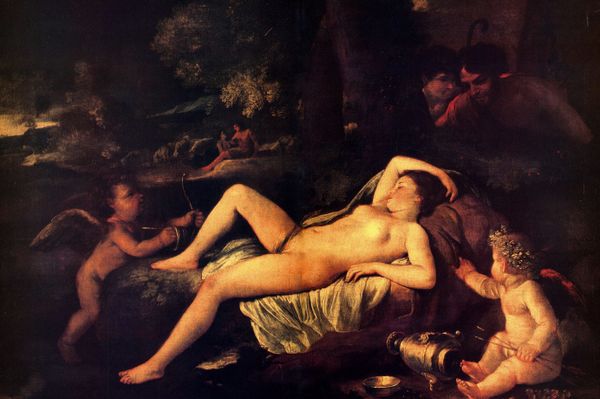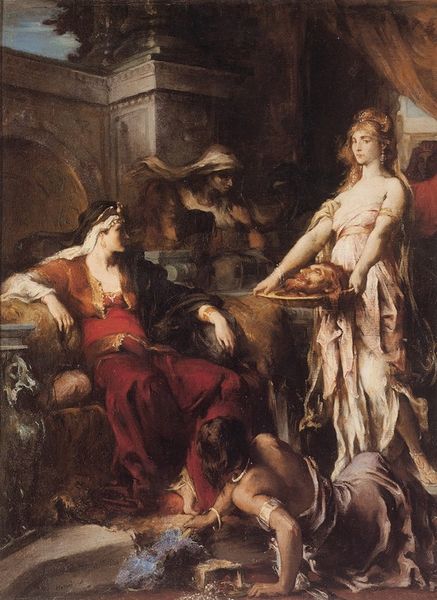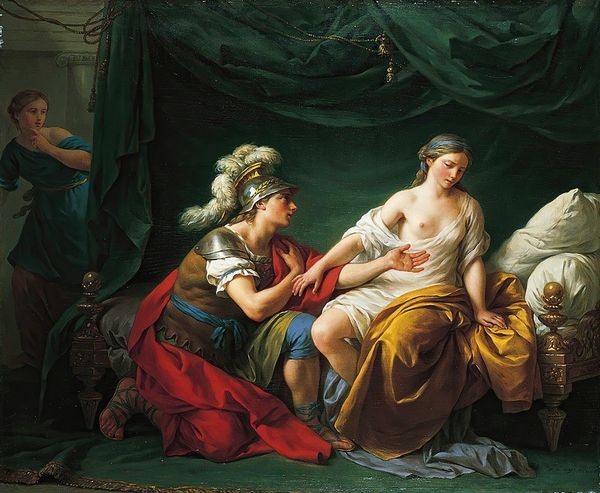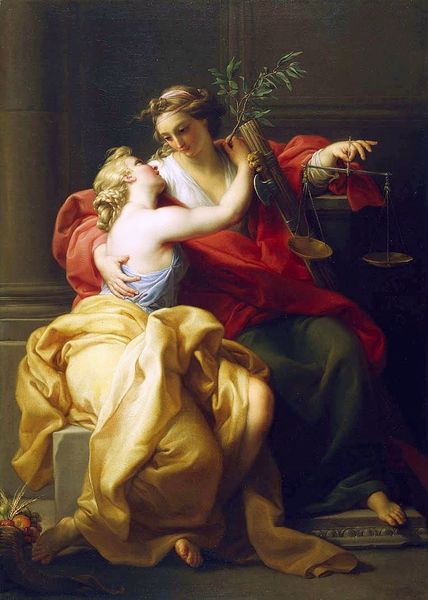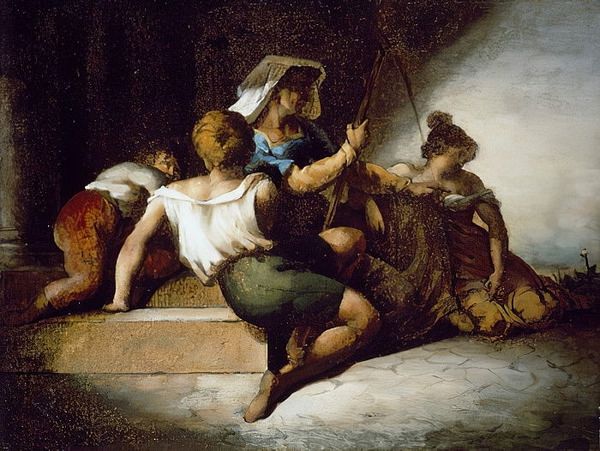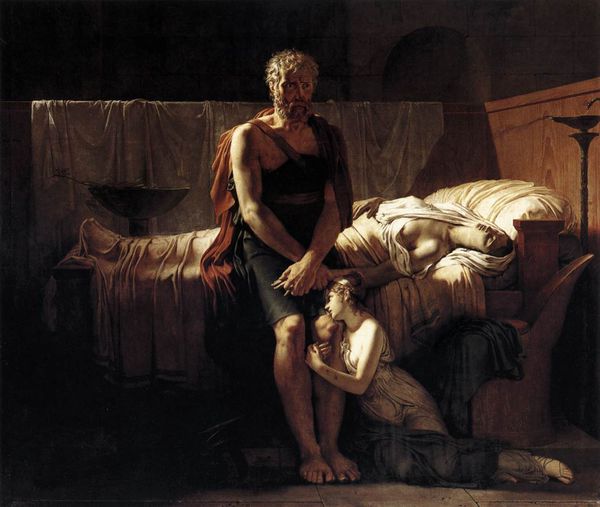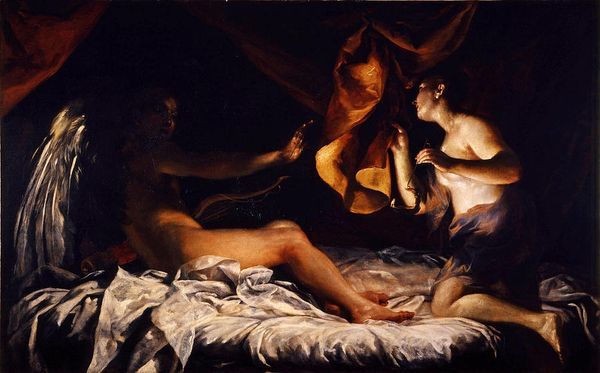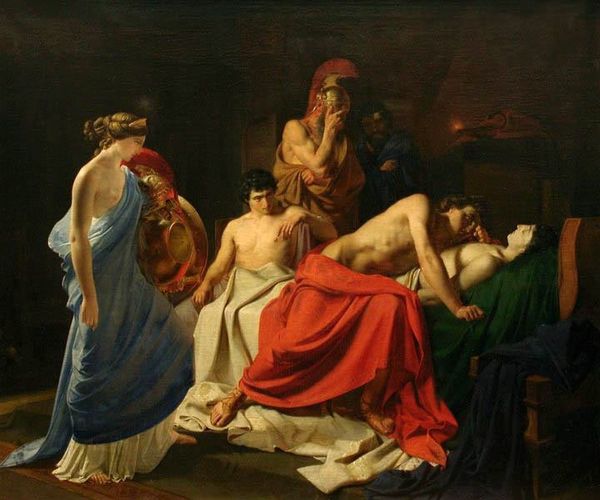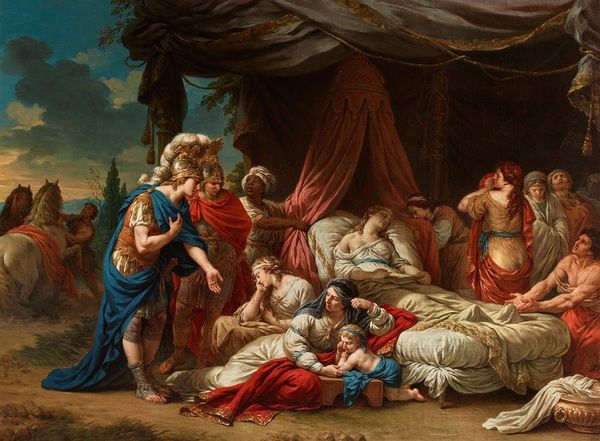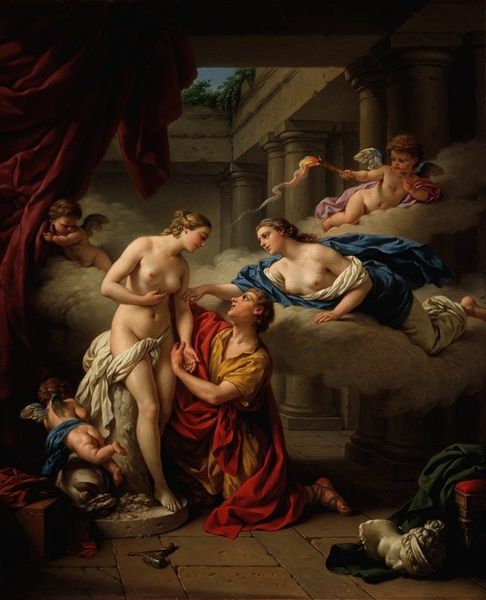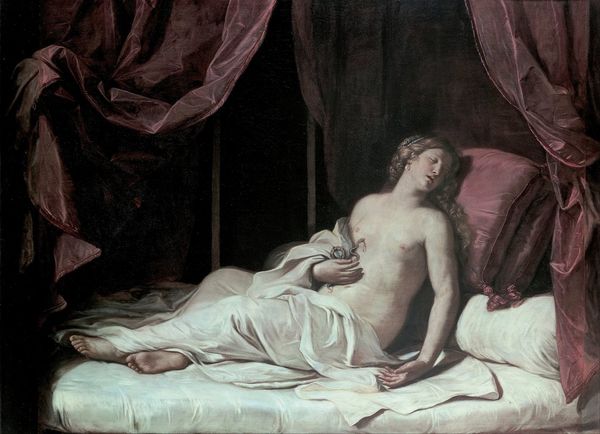
Judith Beheading Holofernes 1620
0:00
0:00
artemisiagentileschi
National Museum of Capodimonte, Naples, Italy, Uffizi Gallery, Florence, Italy
painting, oil-paint
#
narrative-art
#
baroque
#
painting
#
oil-paint
#
figuration
#
history-painting
Dimensions: 125.5 x 158.8 cm
Copyright: Public domain
Curator: What strikes me immediately about Artemisia Gentileschi’s "Judith Beheading Holofernes" from 1620, currently hanging between the National Museum of Capodimonte in Naples and the Uffizi Gallery, is the sheer visceral intensity. Editor: Agreed, there's no romanticizing here. It’s a raw, almost repulsive depiction of violence, different from other portrayals of this biblical scene. Curator: The Baroque style is on full display. The strong contrasts of light and shadow amplify the drama. Consider how Gentileschi frames the subject to intensify this moment of violence. We must recall what it meant for a woman to create such depictions during that period. Editor: Absolutely, and that’s key. The politics of the image, a woman taking control and enacting justice, are so powerful. The fact that Gentileschi herself endured sexual violence undoubtedly shaped her interpretation. It allows for a vital dialogue with contemporary feminist theory. Curator: Some might see the work solely through the lens of Gentileschi’s biography, but to do so would overlook its artistic ambition within the Italian Baroque movement. This composition clearly demonstrates her understanding of narrative painting. We see clear aesthetic dialogues between her rendition and, say, Caravaggio's more subtle take on similar narratives of public power and authority. Editor: Yes, it's more complex. Placing it solely within her personal history risks marginalizing it. I do agree that Artemisia was strategically placing herself and this scene within history painting’s lineage. To do that she chose to confront the themes of violence, resistance, and gendered power that have broad significance outside of Artemisia's life. The figures here embody both historical agency and tangible brutality. It really challenges viewers on their presumptions around this canonical art. Curator: Looking closely, you can almost feel the weight and exertion required for this act, a directness unseen in the works of her male contemporaries. Editor: And the very deliberate absence of heroism! What we're left with is truth about resistance. Thank you for highlighting all of this. It made this piece really stand out to me. Curator: Likewise.
Comments
No comments
Be the first to comment and join the conversation on the ultimate creative platform.
